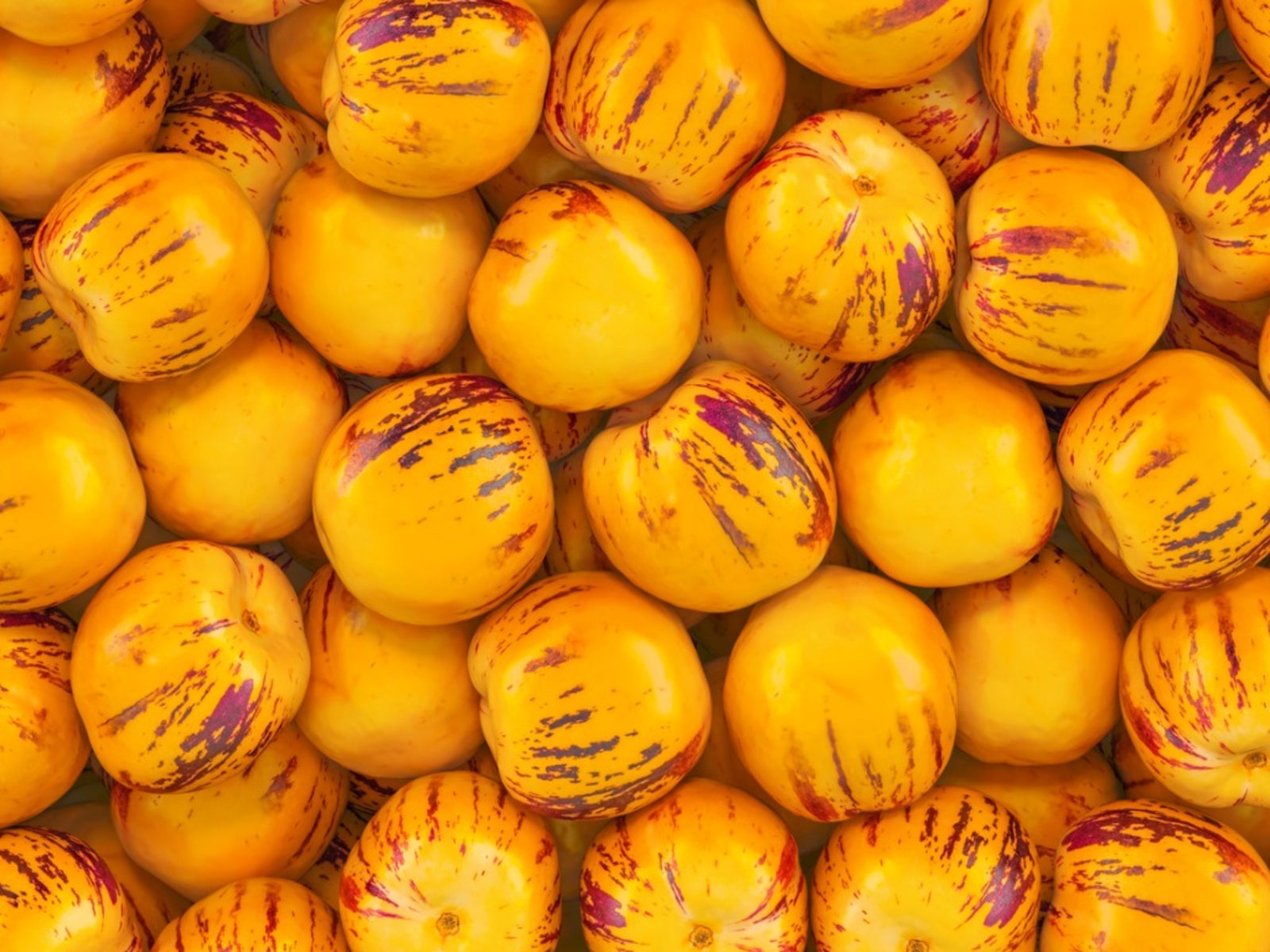
The family Solanaceae (Nightshade) accounts for a significant number of our basic food plants, one of the most common being the Irish potato. A lesser-known member, the pepino melon shrub (Solanum muricatum), is an evergreen shrub native to the mild Andean regions of Colombia, Peru, and Chile.
What is a Pepino?
It is unknown exactly where pepino melon shrubs originate, but it doesn't grow in the wild. So, what is pepino? Growing pepino plants are cultivated in temperate regions of California, New Zealand, Chile, and Western Australia and appear as a small woody, 3 foot (1 m.) or so shrub that is hardy to USDA growing zone 9. The foliage looks very similar to that of the potato plant while its growth habit is akin to that of a tomato, and for this reason, may often require staking. The plant will flower from August to October and fruit appears from September through November. There are many cultivars of pepino, so the appearance may vary. Fruit from the growing pepino plants may be round, oval, or even pear shaped and may be white, purple, green, or ivory in color with purple striping. The flavor of the pepino fruit is similar to that of a honeydew melon, hence its common name of pepino melon, which can be peeled and eaten fresh.
Additional Pepino Plant Information
Additional pepino plant information, sometimes called pepino dulce, tells us that the name ‘Pepino' comes from the Spanish word for cucumber while ‘dulce' is the word for sweet. This sweet melon-like fruit is a good source of vitamin C with 35 milligrams per 100 grams. The flowers of pepino plants are hermaphrodites, having both male and female organs, and are pollinated by insects. Cross pollination is likely, resulting in hybrids and explaining the vast differences between fruit and foliage among growing pepino plants.
Pepino Plant Care
Pepino plants may be grown in sandy, loamy, or even heavy clay soils, although they prefer alkaline, well-draining soil with an acid neutral pH. Pepinos should be planted in sun exposure and in moist soil. Sow the pepino seeds in the early spring indoors or in a warm greenhouse. Once they have attained enough size to transplant, transfer into individual pots but keep them in the greenhouse for their first winter. Once they are a year old, transfer the pepino plants outside to their permanent location in the late spring or early summer after the danger of frost has passed. Protect from frost or cold temperatures. Overwinter indoors or inside the greenhouse. Pepino plants do not set fruit until the night temperatures are over 65 degrees F. (18 C.). The fruit matures 30 to 80 days after pollination. Harvest the pepino fruit just before it is fully ripe, and it will store at room temp for several weeks.
Sign up for the Gardening Know How newsletter today and receive a free copy of our e-book "How to Grow Delicious Tomatoes".

Amy Grant has been gardening for 30 years and writing for 15. A professional chef and caterer, Amy's area of expertise is culinary gardening.
